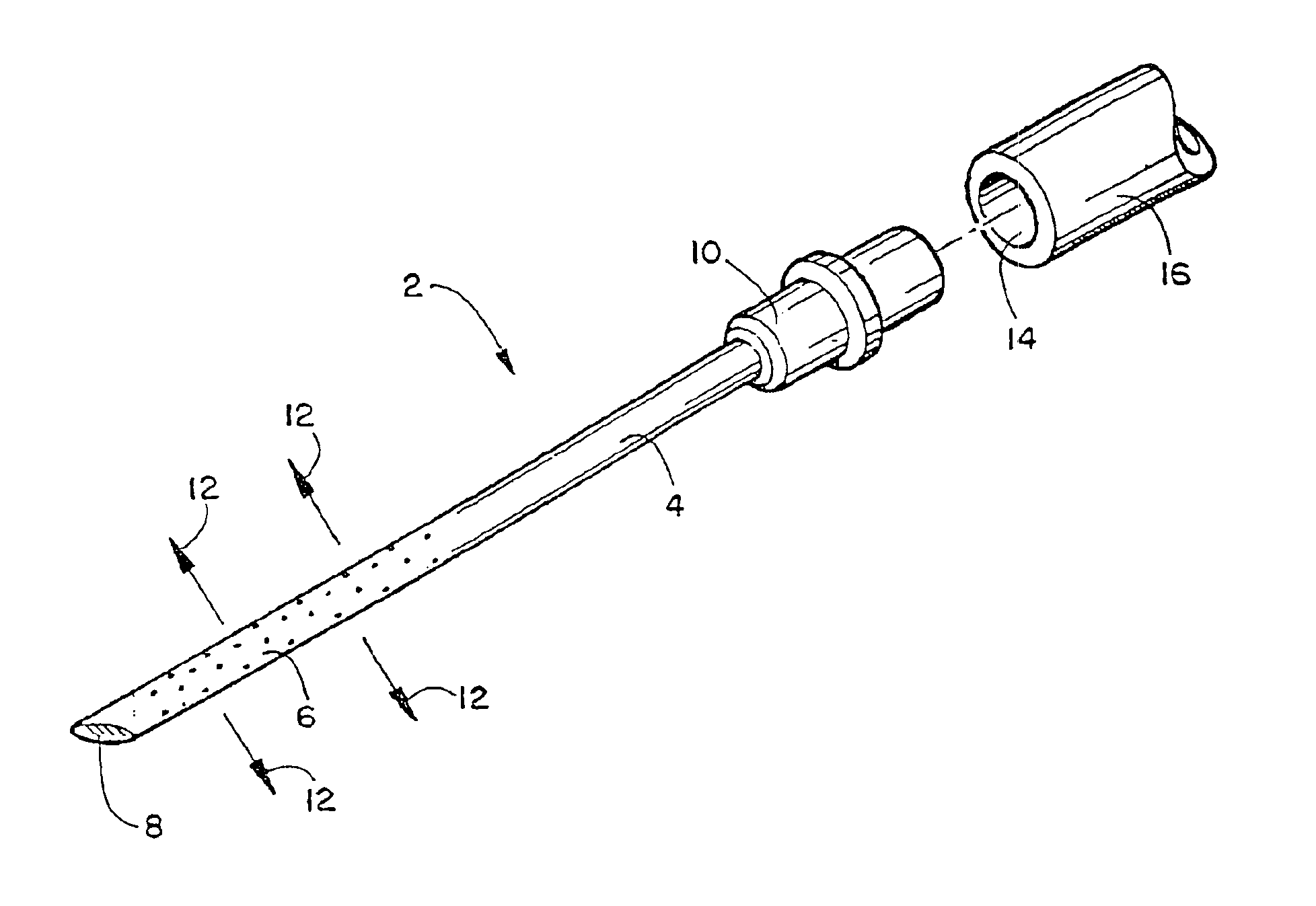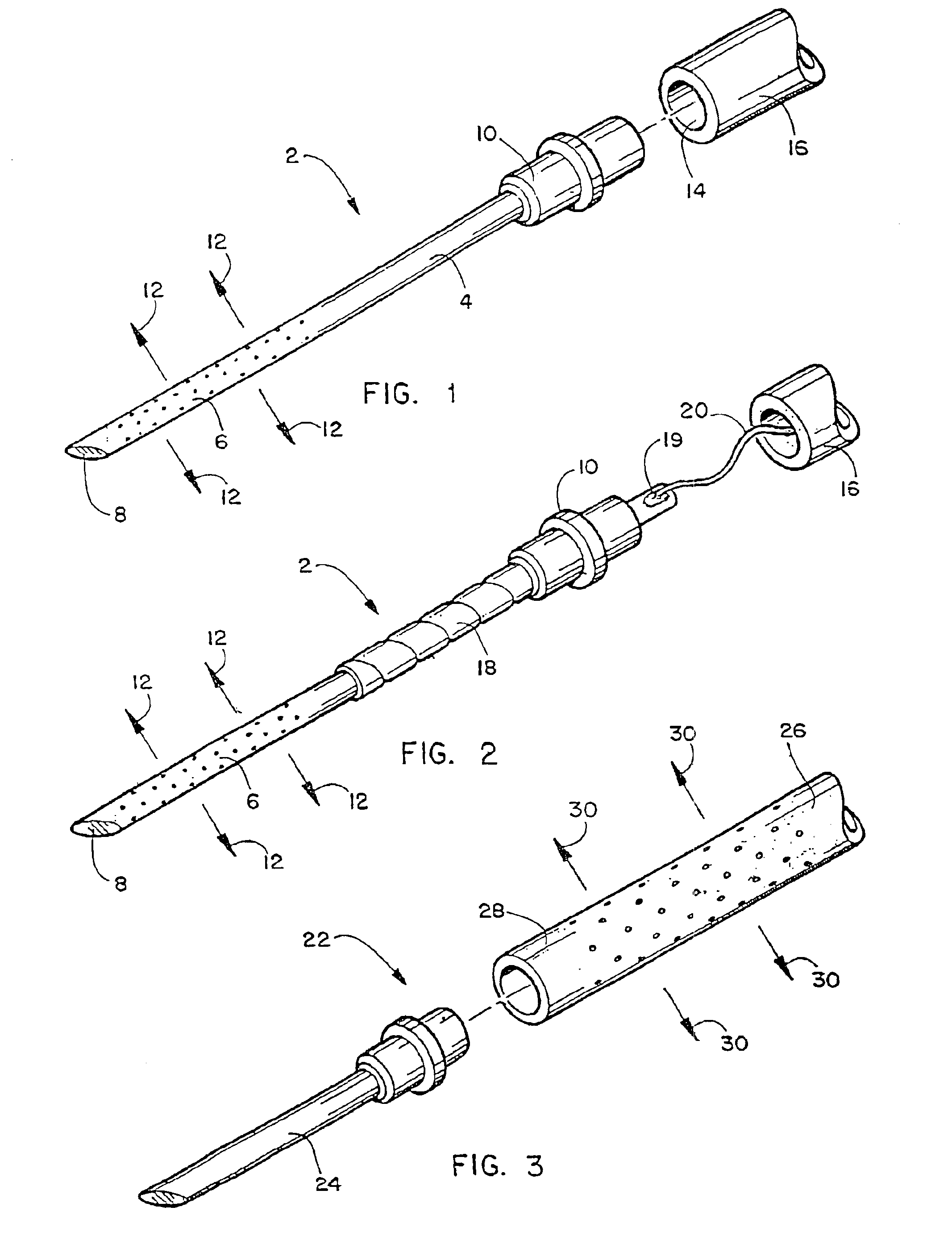Apparatus with weeping tip and method of use
a technology of weeping tip and apparatus, which is applied in the field of surgical instruments, can solve the problems of limited clinical effects of peptides, potential toxicities, and cost associated with isolating and purifying or synthesizing peptides, and achieves the effects of reducing the risk of potential toxicities and toxicity
- Summary
- Abstract
- Description
- Claims
- Application Information
AI Technical Summary
Benefits of technology
Problems solved by technology
Method used
Image
Examples
Embodiment Construction
[0022]The present invention overcomes many of the problems in the art by providing a surgical needle with a weeping tip for microinjection of medicaments into a body surface. The invention surgical needle comprises a nonporous hollow needle shaft having a proximal end adapted to mate with a surgical instrument, a porous distal portion in fluid-tight connection to the needle shaft, and a point that is open, closed, or has a solid partial plug. The distal portion of the invention needle is adapted to cause a liquid injectate to weep or ooze therefrom multidirectionally under injection pressure while the distal portion and point of the needle are inserted into a body surface. Typically, the length of the porous distal portion of the needle is determined by its intended use (e.g., whether intended for injecting medicament into a blood vessel or into a kidney, and the like). However, the porous distal portion is generally about 1 mm to about 20 mm in length and has pores with an average ...
PUM
| Property | Measurement | Unit |
|---|---|---|
| diameter | aaaaa | aaaaa |
| diameter | aaaaa | aaaaa |
| length | aaaaa | aaaaa |
Abstract
Description
Claims
Application Information
 Login to View More
Login to View More - R&D
- Intellectual Property
- Life Sciences
- Materials
- Tech Scout
- Unparalleled Data Quality
- Higher Quality Content
- 60% Fewer Hallucinations
Browse by: Latest US Patents, China's latest patents, Technical Efficacy Thesaurus, Application Domain, Technology Topic, Popular Technical Reports.
© 2025 PatSnap. All rights reserved.Legal|Privacy policy|Modern Slavery Act Transparency Statement|Sitemap|About US| Contact US: help@patsnap.com


